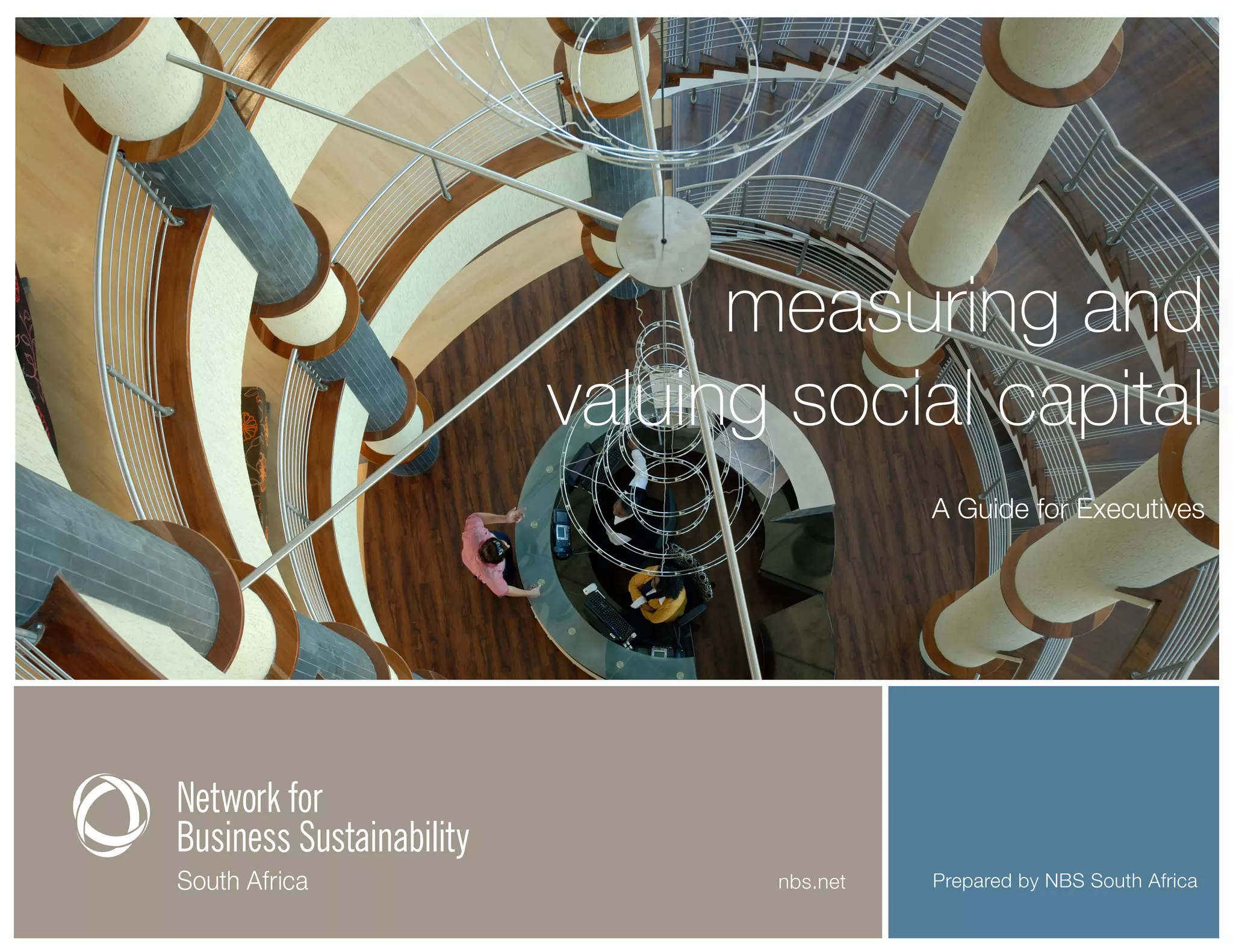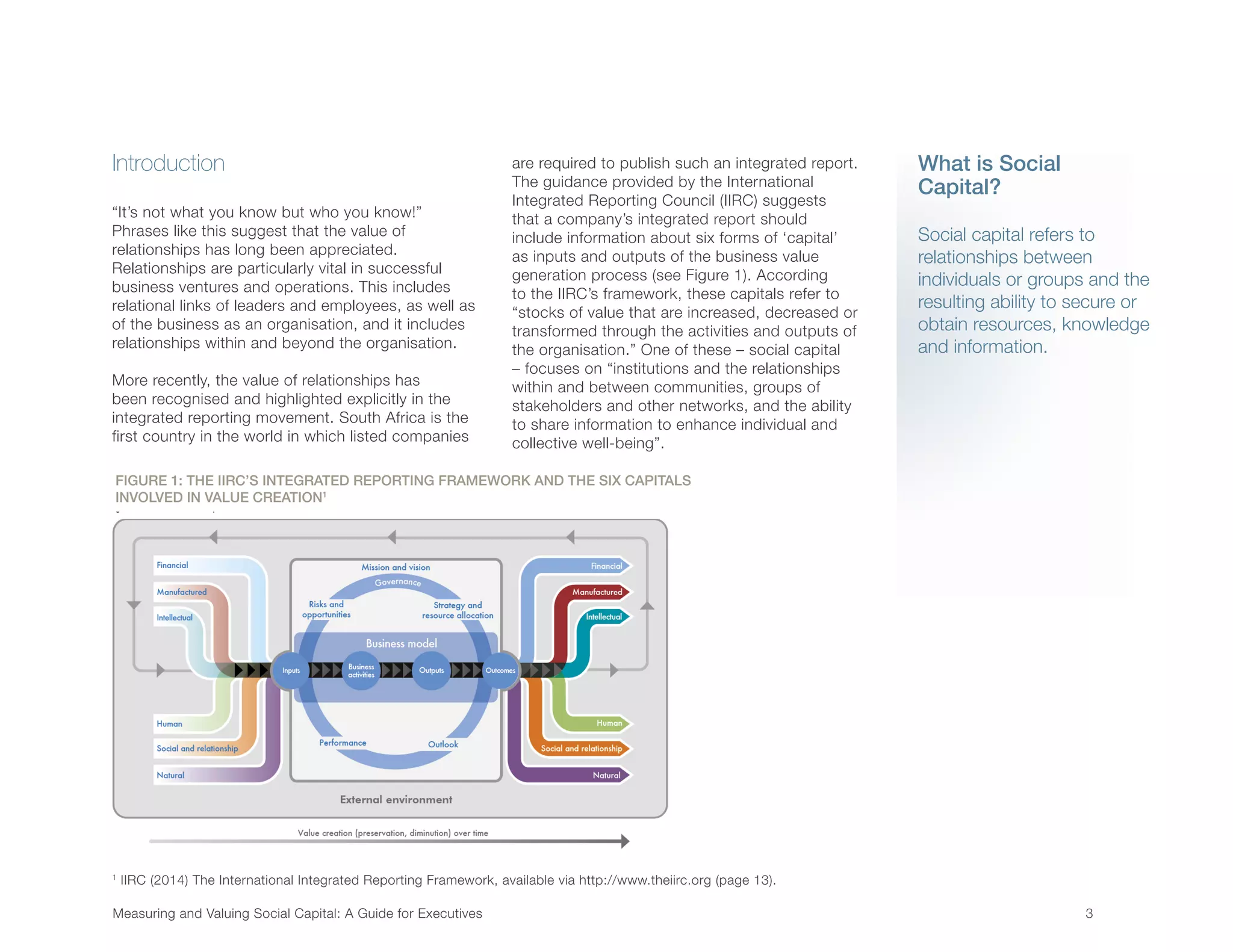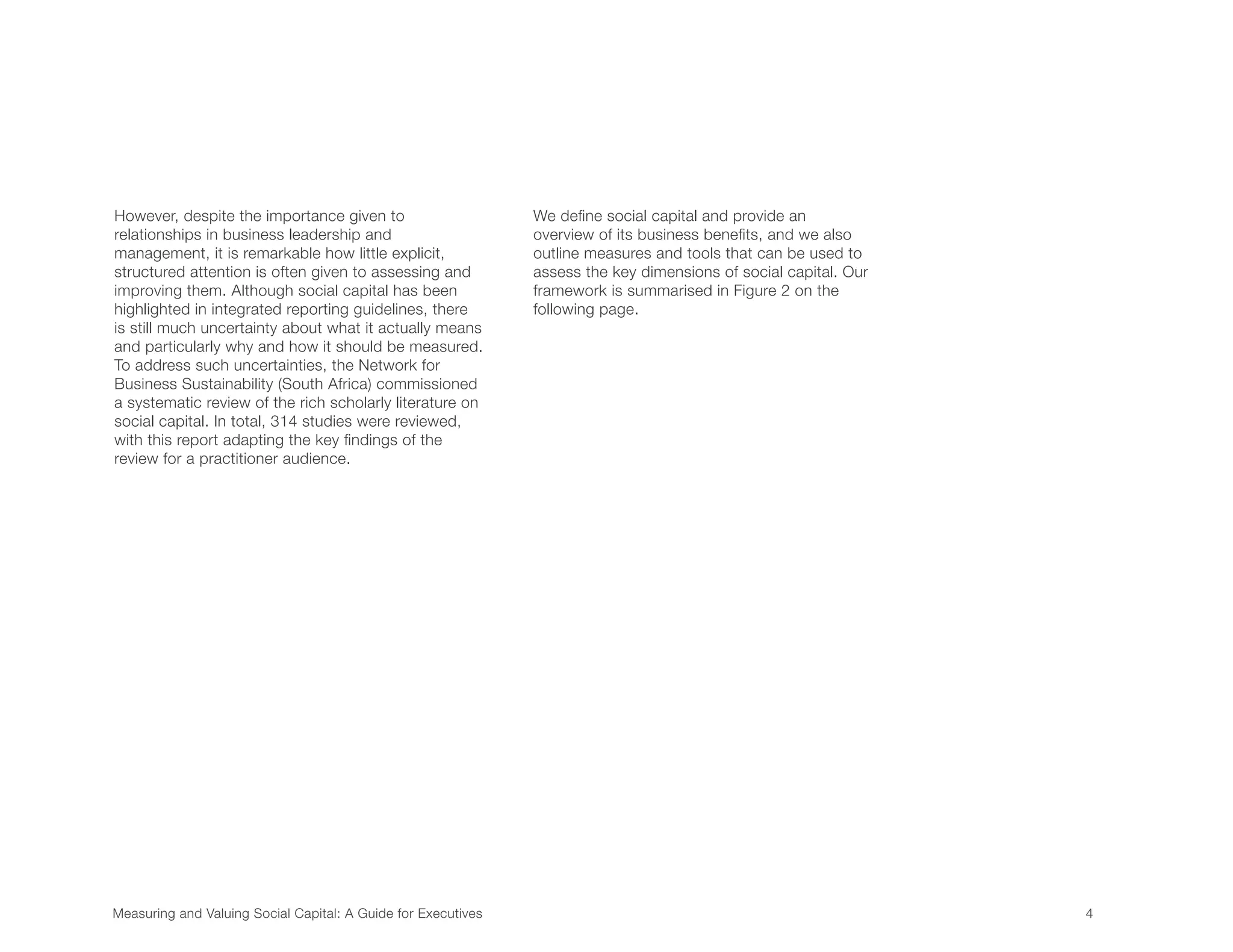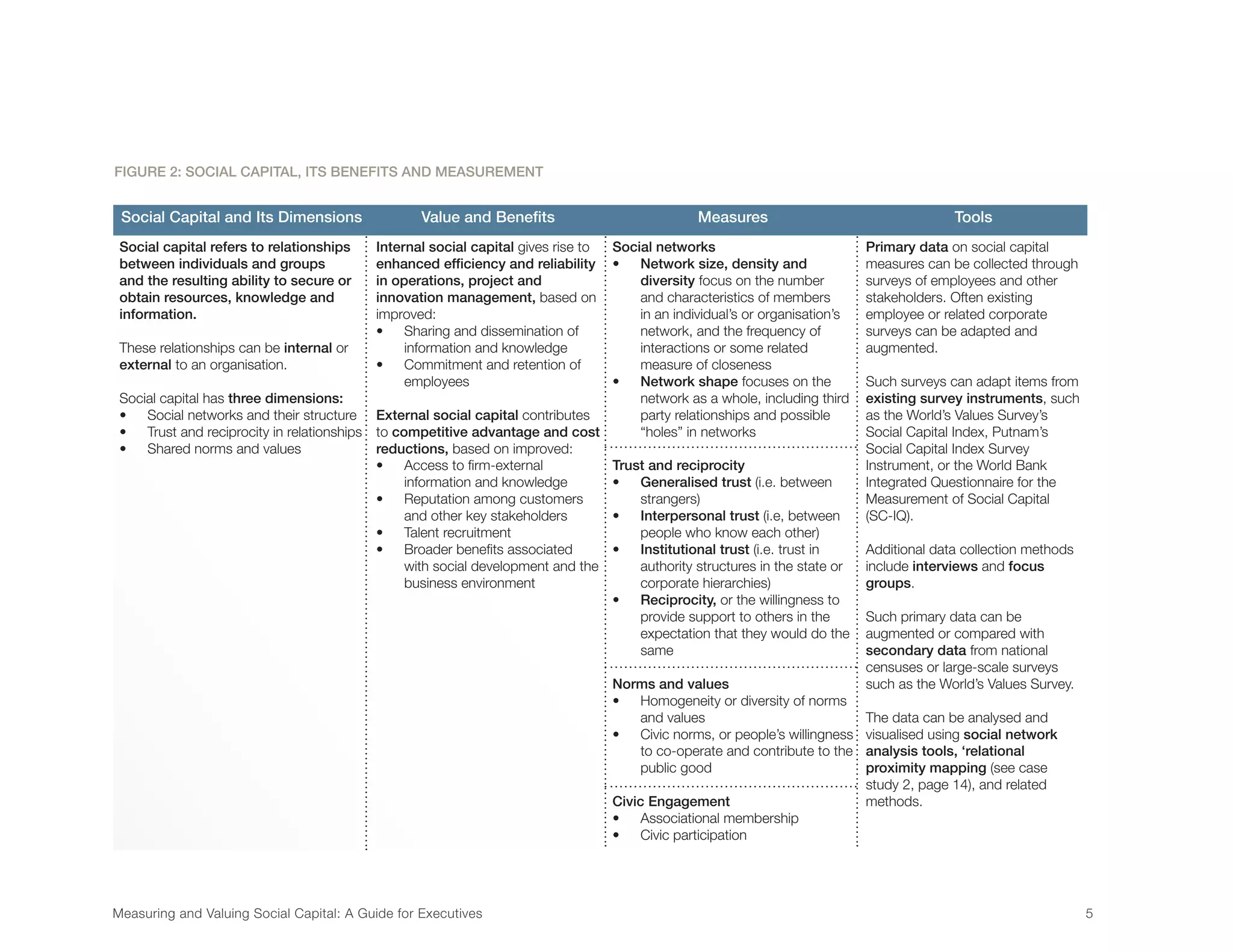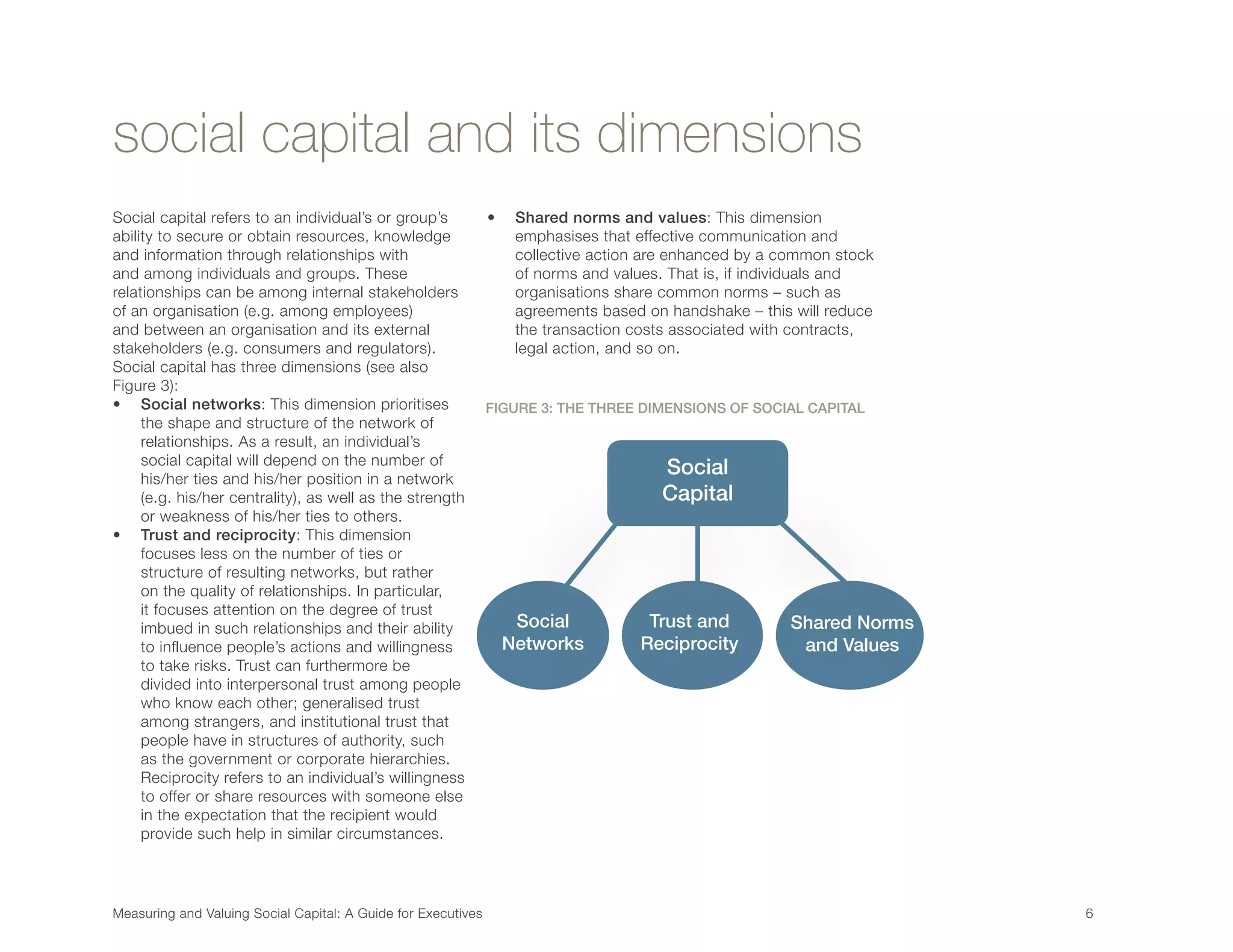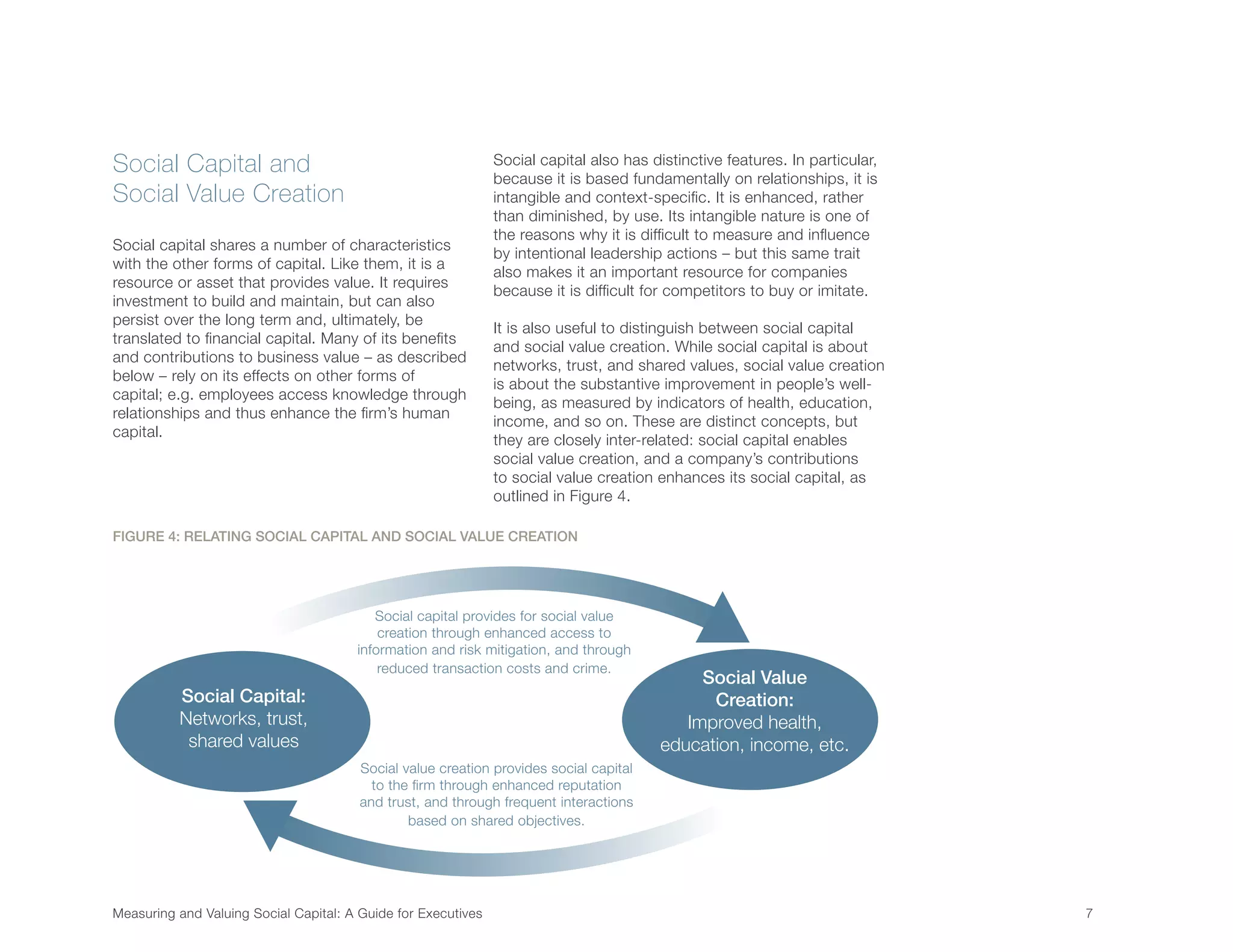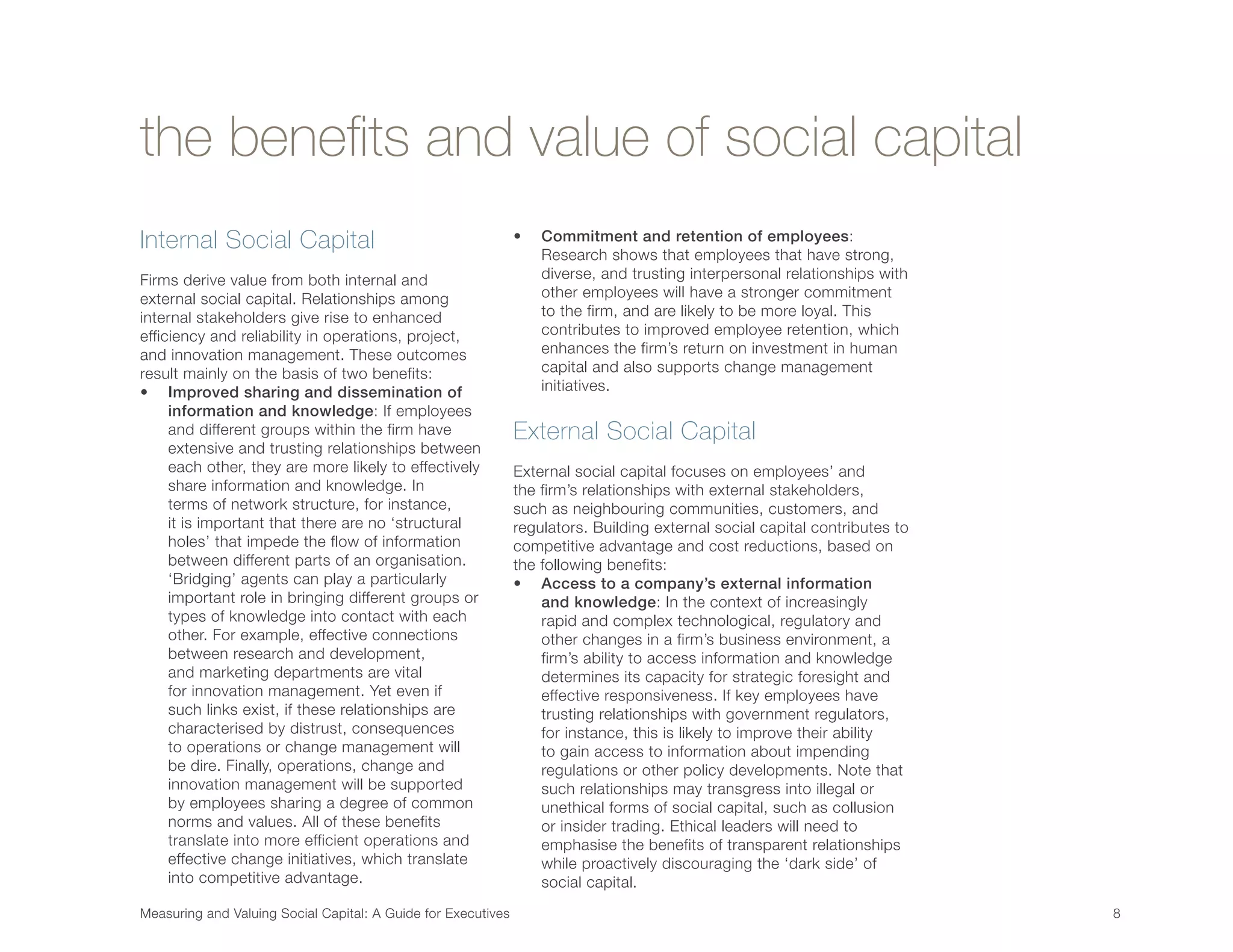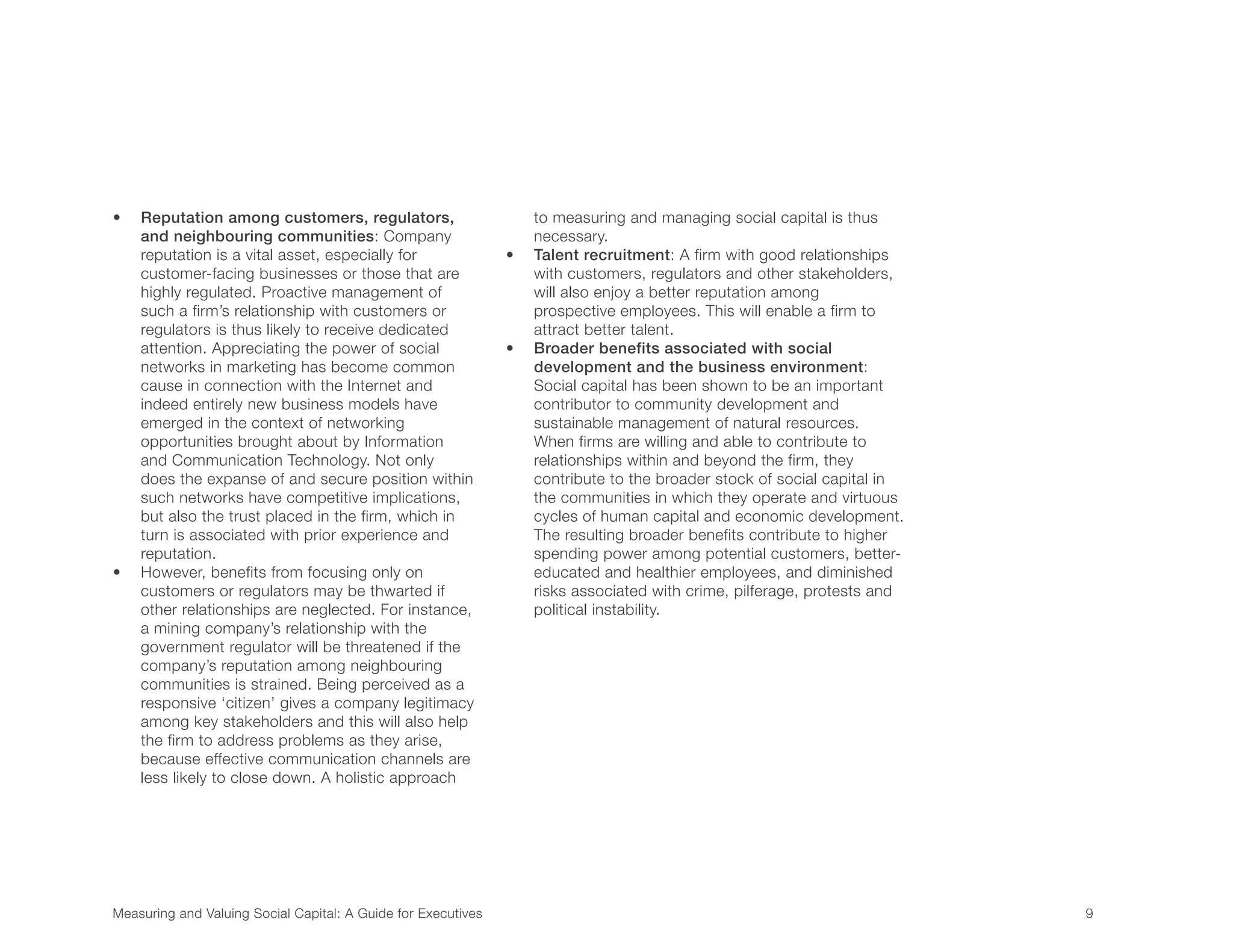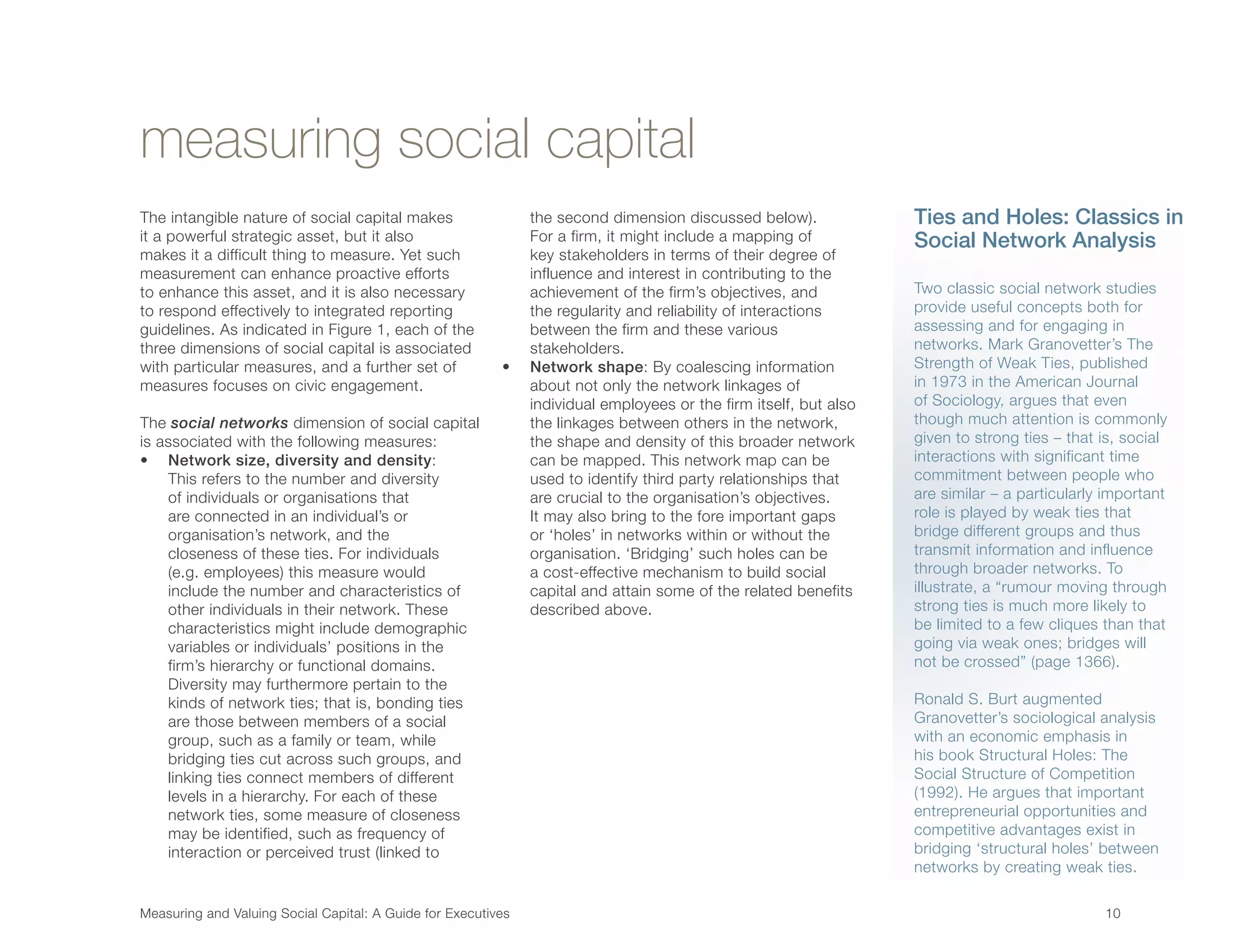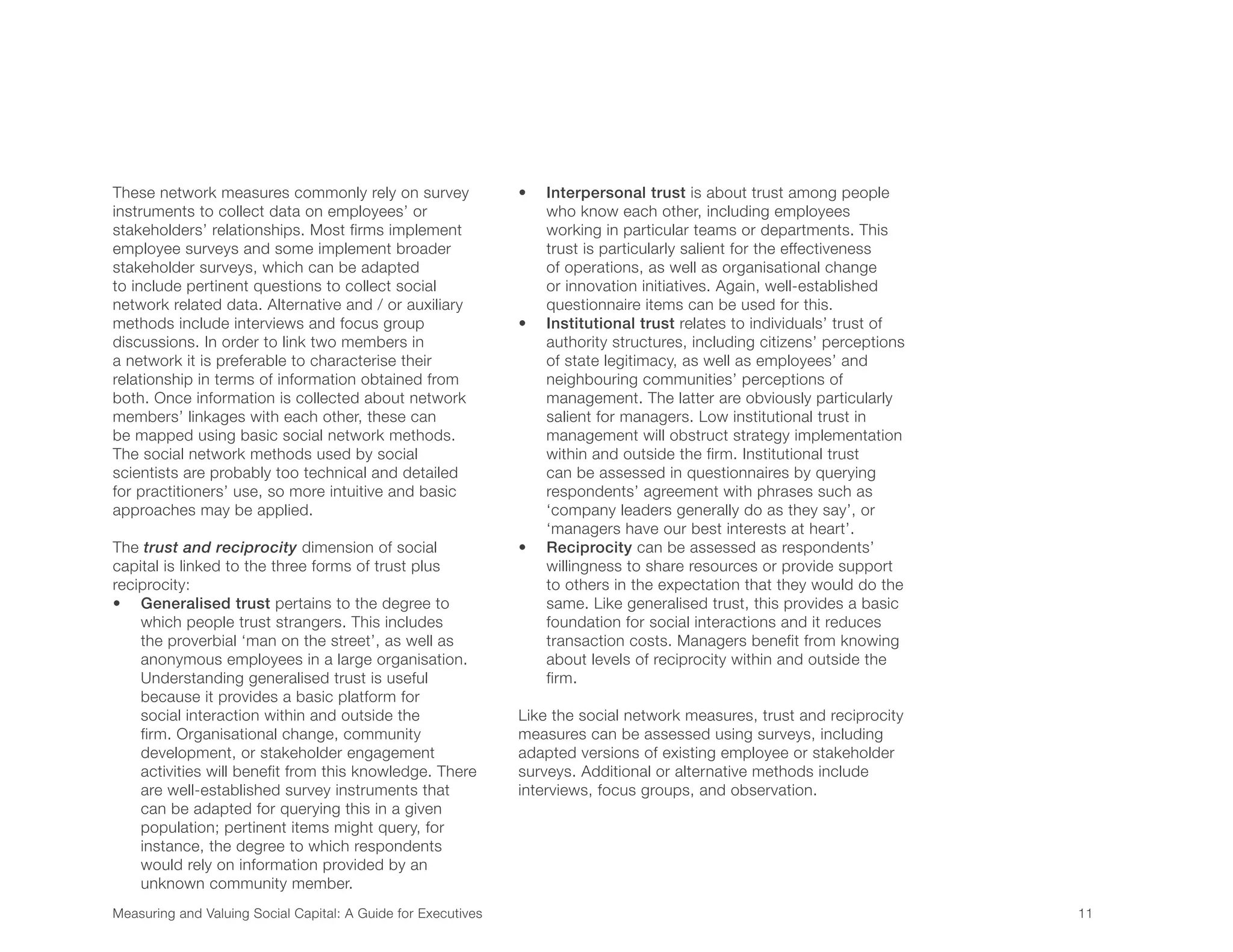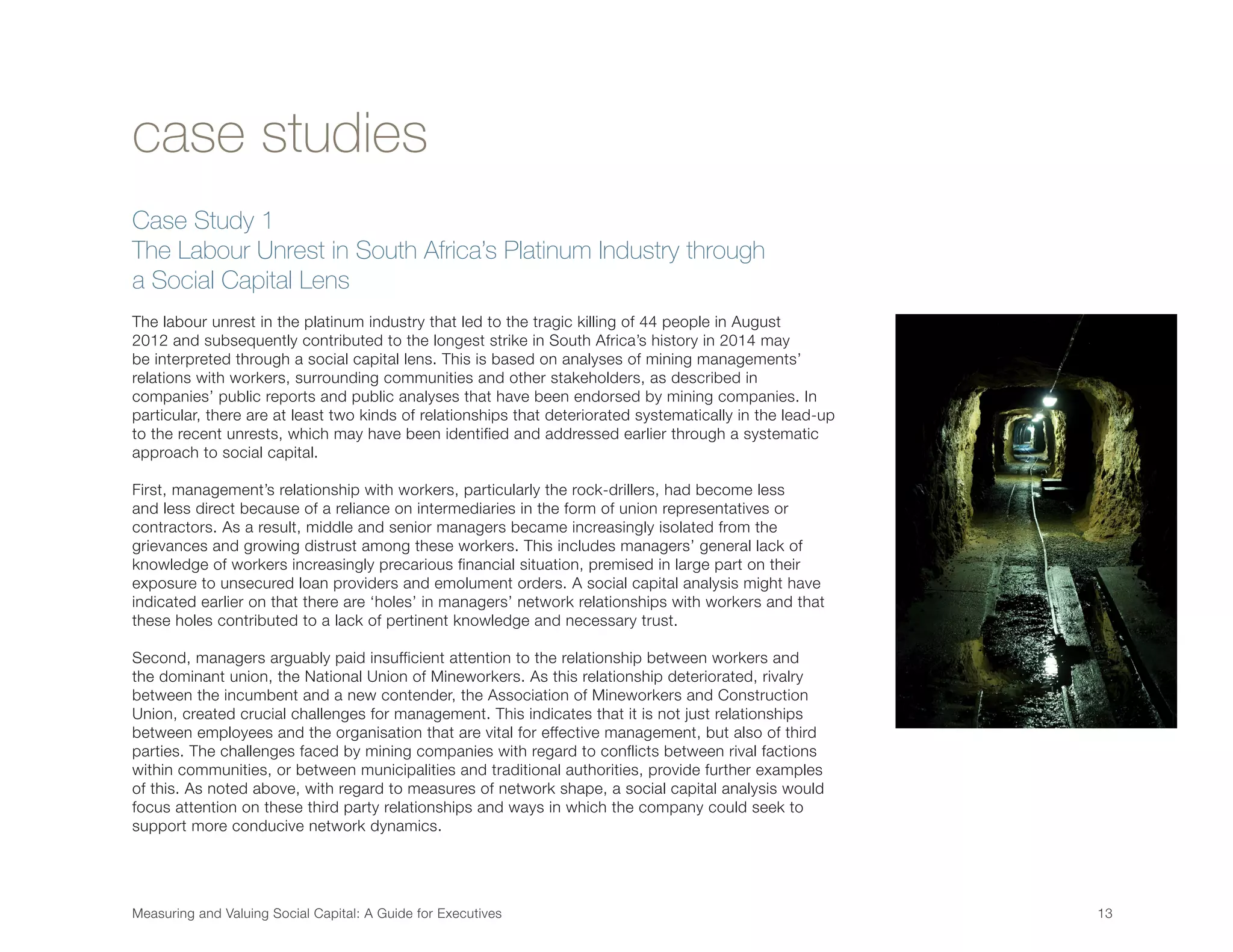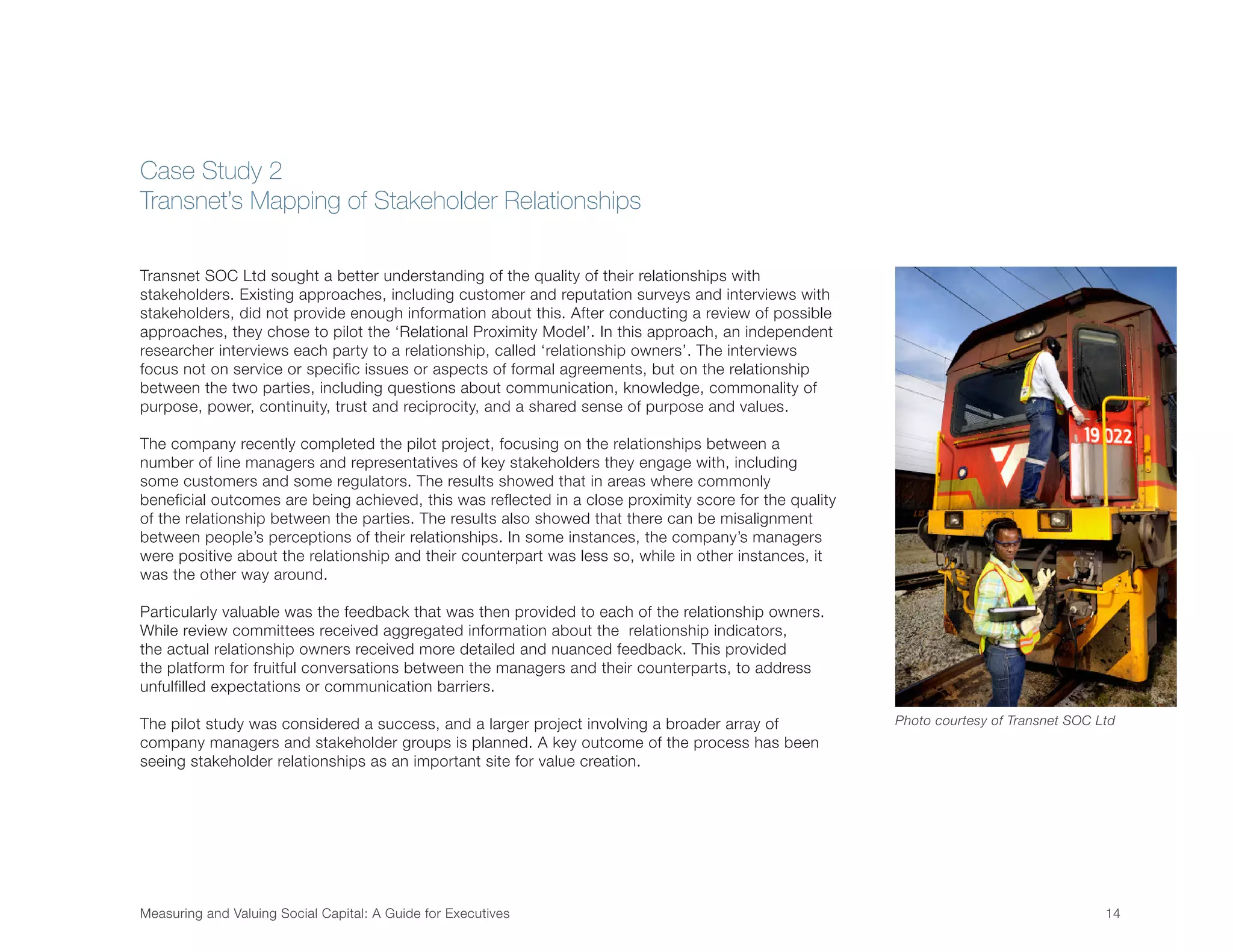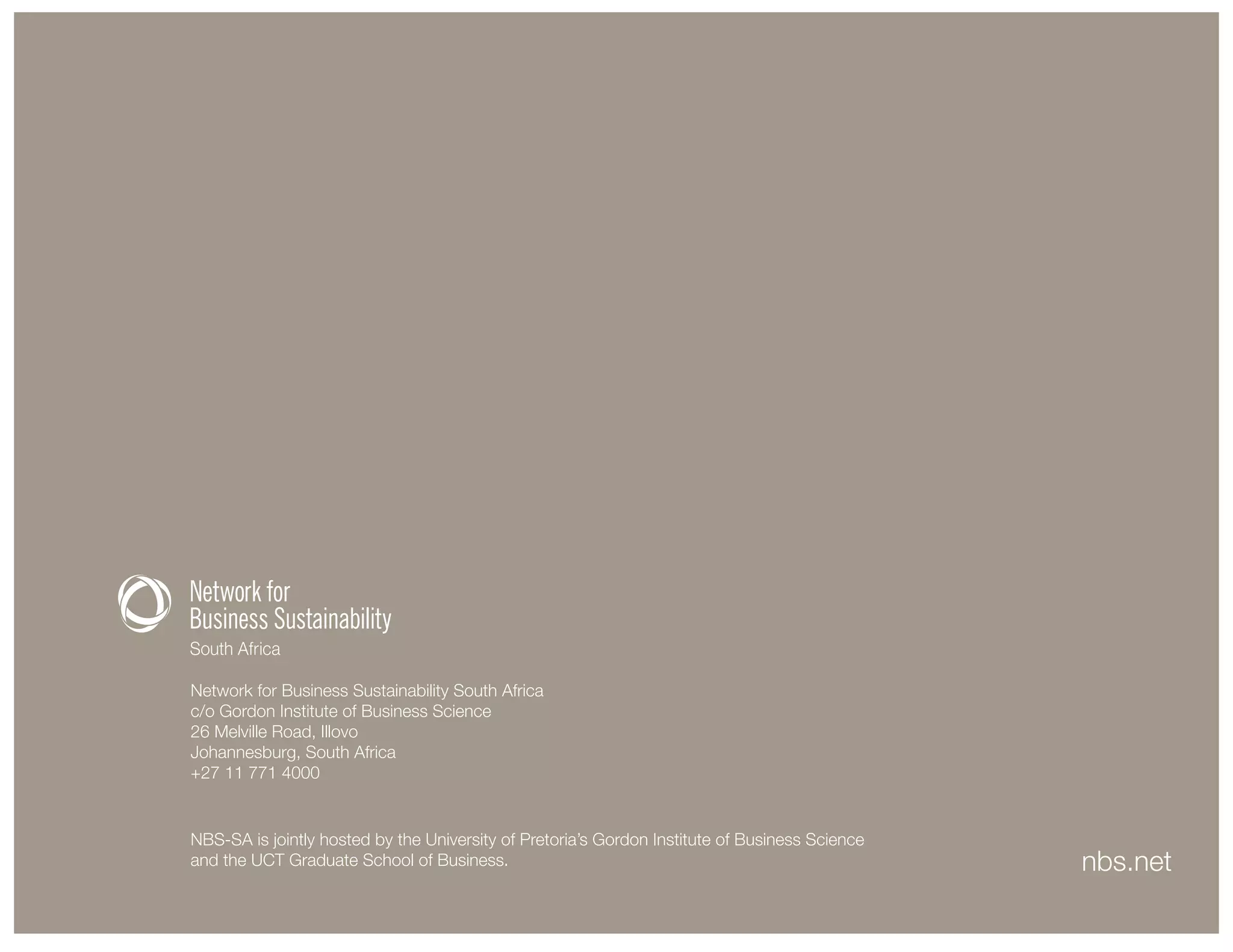This document is a guide for executives on measuring and valuing social capital, based on a systematic review of 314 studies. It defines social capital as the relationships between individuals and groups that facilitate access to resources and information, highlighting its three dimensions: social networks, trust and reciprocity, and shared norms and values. The guide emphasizes the importance of social capital in enhancing organizational efficiency and competitive advantage, while also providing measurement tools and methods for assessing its impact on business value.
